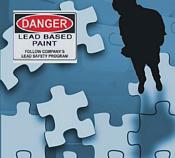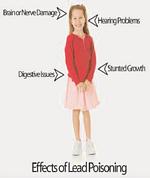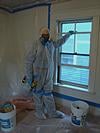The EPA has issued a FAQ document to help clarify their intent regarding the June 18, 2010 memo that delayed enforcement of the Certification requirements. The text of the clarification document is as follows:
Frequent Questions on EPA's June 18, 2010 Implementation Guidance for the Renovation, Repair and Painting Rule
Q. Does EPA's announcement of June 18, 2010, modify the Lead Renovation Repair and Painting Rule's requirements that contractors use lead-safe work practices when working in pre-1978 housing or child-occupied facilities?

No. This announcement does not change the requirement that all contractors take steps to protect children and families from the dangers of lead poisoning by becoming certified and following the work practice standards and the associated recordkeeping requirements. As of April 22, all contractors have been required to be certified and follow the work practice standards described on EPA's website. The effect of the June 18 memorandum only provides firms more time to apply for and obtain certification as a lead-based paint renovation firm before active enforcement of the firm certification requirements begins. EPA is also providing individual workers additional time to enroll in and take the required training course to become certified lead-based paint renovators before active enforcement of the individual renovator training requirements begins. EPA will use its enforcement authority to ensure compliance by enforcing work practice standards and their associated recordkeeping requirements against all renovators and firms. Therefore, renovators who have not been able to complete the training requirements are advised to review EPA's model training materials available at www.epa.gov/lead/pubs/training.htm. Additional information on lead-safe work practices can be found at www.epa.gov/lead or obtained from the National Lead Information Center at 1-800-424-LEAD (5323).

All renovation firms, even those not yet certified under the RRP rule, are also reminded of their continuing obligations to comply with Lead Renovation, Repair and Painting Rule's pre-renovation information distribution requirements, which require that before firms begin each renovation on pre-1978 housing or child-occupied facilities and to comply with the associated recordkeeping requirements. These requirements are explained in EPA's Small Entity Compliance Guide to Renovate Right.
Q. Does the June 18, 2010, announcement mean that EPA will not enforce certification and training requirements until after October 1, 2010, for firms and December 31, 2010, for renovators?
A. EPA is not stopping its enforcement against any renovation firms and individual renovators who do not comply with requirements of work practice standards and associated recordkeeping requirements. However, EPA is providing additional time for renovation firms and workers to obtain the necessary training and certifications before enforcement of the firm certification and individual renovator requirements begins.
Renovation Firms. Until October 1, 2010, EPA will not take enforcement action for violations of the RRP rule's firm certification requirement.
Individual Renovators. EPA will not enforce against individual renovation workers for failure to be trained if the person has applied to enroll in, or has enrolled in, by not later than September 30, 2010, a certified renovator class to train contractors in practices necessary for compliance with the final rules. Individual renovators must complete the training by December 31, 2010. Renovators who have not been able to complete the training requirements are advised to review EPA's model training materials available at www.epa.gov/lead/pubs/training.htm. Additional information on lead-safe work practices can be found at www.epa.gov/lead or obtained from the National Lead Information Center at 1-800-424-LEAD (5323).
Q. Thousands of renovators are already trained and their firms are EPA certified. Will EPA enforce against renovators who did not receive their training certification before December 31, 2010?
A. It is most important that all contractors follow the RRP work practice standards. However, EPA is providing additional time for renovation firms and workers to obtain the necessary training and certifications before the enforcement of the firm certification and individual renovator requirements begins. Therefore, renovators who have not been able to complete the training requirements are advised to review EPA's model training materials available at www.epa.gov/lead/pubs/training.htm. Additional information on lead-safe work practices can be found at www.epa.gov/lead or obtained from the National Lead Information Center at 1-800-424-LEAD (5323).
Q. Doesn't the June 18 memorandum extend an unfair advantage to members of the regulated community who have delayed compliance with the certification and training requirements and punish those who have complied with the rule?
 A. EPA does not believe that allowing more time for firms to become certified and renovators to become trained extends an unfair advantage. To the contrary, firms that are already certified can benefit by continuing to advertise that they are certified and may continue to use EPA's program logo during this interim period. The Agency also recognizes the challenges some are facing in obtaining training in a timely fashion and is providing additional time to individual renovators to enroll in and take the required training courses before the Agency actively enforces the individual renovator requirements. EPA is committed to encouraging additional training opportunities in every state to meet this demand for classes.
A. EPA does not believe that allowing more time for firms to become certified and renovators to become trained extends an unfair advantage. To the contrary, firms that are already certified can benefit by continuing to advertise that they are certified and may continue to use EPA's program logo during this interim period. The Agency also recognizes the challenges some are facing in obtaining training in a timely fashion and is providing additional time to individual renovators to enroll in and take the required training courses before the Agency actively enforces the individual renovator requirements. EPA is committed to encouraging additional training opportunities in every state to meet this demand for classes.
Q. How does the June 18 announcement impact renovators in states that have adopted their own RRP programs?
A. As of June 21, 2010, eight states -- Wisconsin, Iowa, North Carolina, Mississippi, Kansas, Rhode Island, Utah, and Oregon - administer and enforce their own RRP programs.
Renovators working in these states must comply with all applicable state laws, notwithstanding this guidance.
Q. What happens if an individual applied or was accepted for training before October 1, 2010, but the course is cancelled or delayed by the training provider during that 90-day period (October 1 - December 31, 2010)? What recourse does the individual renovation worker have after 12/31/10?
A. The renovator must complete training by December 31, 2010. EPA encourages renovators and firms to take advantage of this opportunity and not delay in becoming trained and certified.
Q. How soon should renovation firms send their applications to EPA?
A. Firms should send their applications to EPA as soon as possible. All firms that are not certified by October 1, 2010, will be subject to penalties for failing to comply with the renovation firm requirements of the RRP rule. EPA has been working to expedite processing of applications but, under the regulations, may take up to 90 days.

 Looking for accurate information about the EPA RRP rule?
Looking for accurate information about the EPA RRP rule? 
 Many remodelers have asked me about resources they can use to find out more about lead, lead poisoning and the EPA RRP rule. When I ask them why they are looking for this information two common reasons seem to rise to the top. First, they are looking to better educate themsleves about lead and lead poisoning so they can be better prepared to discuss the health risks of lead with their clients and prospects. Second, they are looking for resources to share with their prospects and clients, either as part of their marketing efforts or to add to their web sites.
Many remodelers have asked me about resources they can use to find out more about lead, lead poisoning and the EPA RRP rule. When I ask them why they are looking for this information two common reasons seem to rise to the top. First, they are looking to better educate themsleves about lead and lead poisoning so they can be better prepared to discuss the health risks of lead with their clients and prospects. Second, they are looking for resources to share with their prospects and clients, either as part of their marketing efforts or to add to their web sites. I just received this announcement from The Massachusetts Department of Occupational Safety. To avoid confusion, I want to clarify that contractors working on pre-1978 homes must still follow the current EPA RRP Rule until Massachusetts confirms its authority to administer and enforce the new MA RRP Regulations from the EPA.
I just received this announcement from The Massachusetts Department of Occupational Safety. To avoid confusion, I want to clarify that contractors working on pre-1978 homes must still follow the current EPA RRP Rule until Massachusetts confirms its authority to administer and enforce the new MA RRP Regulations from the EPA. 

 EPA Answer: Not necessarily. "Child-occupied facility'' means a building, or portion of a building, constructed prior to 1978, visited regularly by the same child, under 6 years of age, on at least two different days within any week (Sunday through Saturday period), provided that each day's visit lasts at least 3 hours and the combined weekly visits last at least 6 hours, and the combined annual visits last at least 60 hours. Child-occupied facilities may include, but are not limited to, day care centers, preschools and kindergarten classrooms. Child-occupied facilities may be located in target housing or in public or commercial buildings.
EPA Answer: Not necessarily. "Child-occupied facility'' means a building, or portion of a building, constructed prior to 1978, visited regularly by the same child, under 6 years of age, on at least two different days within any week (Sunday through Saturday period), provided that each day's visit lasts at least 3 hours and the combined weekly visits last at least 6 hours, and the combined annual visits last at least 60 hours. Child-occupied facilities may include, but are not limited to, day care centers, preschools and kindergarten classrooms. Child-occupied facilities may be located in target housing or in public or commercial buildings. 





 "The RRP Rule covers renovations, which are defined as modifications of existing structures or portions of structures. The rule does not apply to demolitions of an entire free-standing building or structure.
"The RRP Rule covers renovations, which are defined as modifications of existing structures or portions of structures. The rule does not apply to demolitions of an entire free-standing building or structure. Renovators working under the EPA RRP Rule should become familiar with these terms and their meanings. If you haven't noticed already, the EPA has taken upon itself to create new and different definitions to many common terms already used in the renovation and remodeling industry. This can cause confusion when attempting to understand and interpret the EPA RRP Rule. Knowing these terms and the related "EPA RRP Definitions" for these terms can help avoid inaccurate assumptions and potential fines.
Renovators working under the EPA RRP Rule should become familiar with these terms and their meanings. If you haven't noticed already, the EPA has taken upon itself to create new and different definitions to many common terms already used in the renovation and remodeling industry. This can cause confusion when attempting to understand and interpret the EPA RRP Rule. Knowing these terms and the related "EPA RRP Definitions" for these terms can help avoid inaccurate assumptions and potential fines. In a June 3, 2010
In a June 3, 2010 
 Statistics have shown, including EPA's own research, that more children are poisoned by lead due to renovations as a result of their parents doing the work than by professional remodelers.
Statistics have shown, including EPA's own research, that more children are poisoned by lead due to renovations as a result of their parents doing the work than by professional remodelers. 



